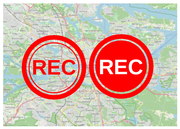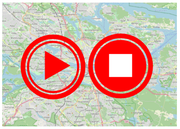Quote from: Menion on April 23, 2021, 10:26:15I guess Andrew meant:
@Andrew Heard
Both "itineraries" have different use-case. In the route planner, it is mainly about the option to see all segments on one screen and the option to change easily it's order. In the active navigation route planner, it is about a common itinerary known from bigger navigation apps. It should be read-only and give quick overview of what will come.
Can't imagine how to merge them to be true
- RoutePlanner-iternary being an parameter-list (input, via-points)
- Navigation-iternary being an calculated result-list (output)(containing the via-points as used constraints)
Currently you see the (calculated) results in
- RoutePlanner as drawn route > graphics only
- after starting navigation as route & iternary > graphics + table
even though it's in both situation already calculated.
In RoutePlanner maybe without fetching road-names.
With having the full result you can better decide whether to use it or not..if you started the process of navigation, it's not that easy to step back.
Maybe you are in unknown territory and someone gives you some hints, use a certain street, whatever..
Currently you have to do some clicks and cannot go back and forth easily.
In my opinion the iternary could gain some structure and styling to clearly differ between input-points and calculated parts between
- shaping point 1
- road/segment 1
- road/segment 2
- ..
- shaping point 2
- road/segment 1
- ...
- shaping point 3
maybe collapsable




 )
)


